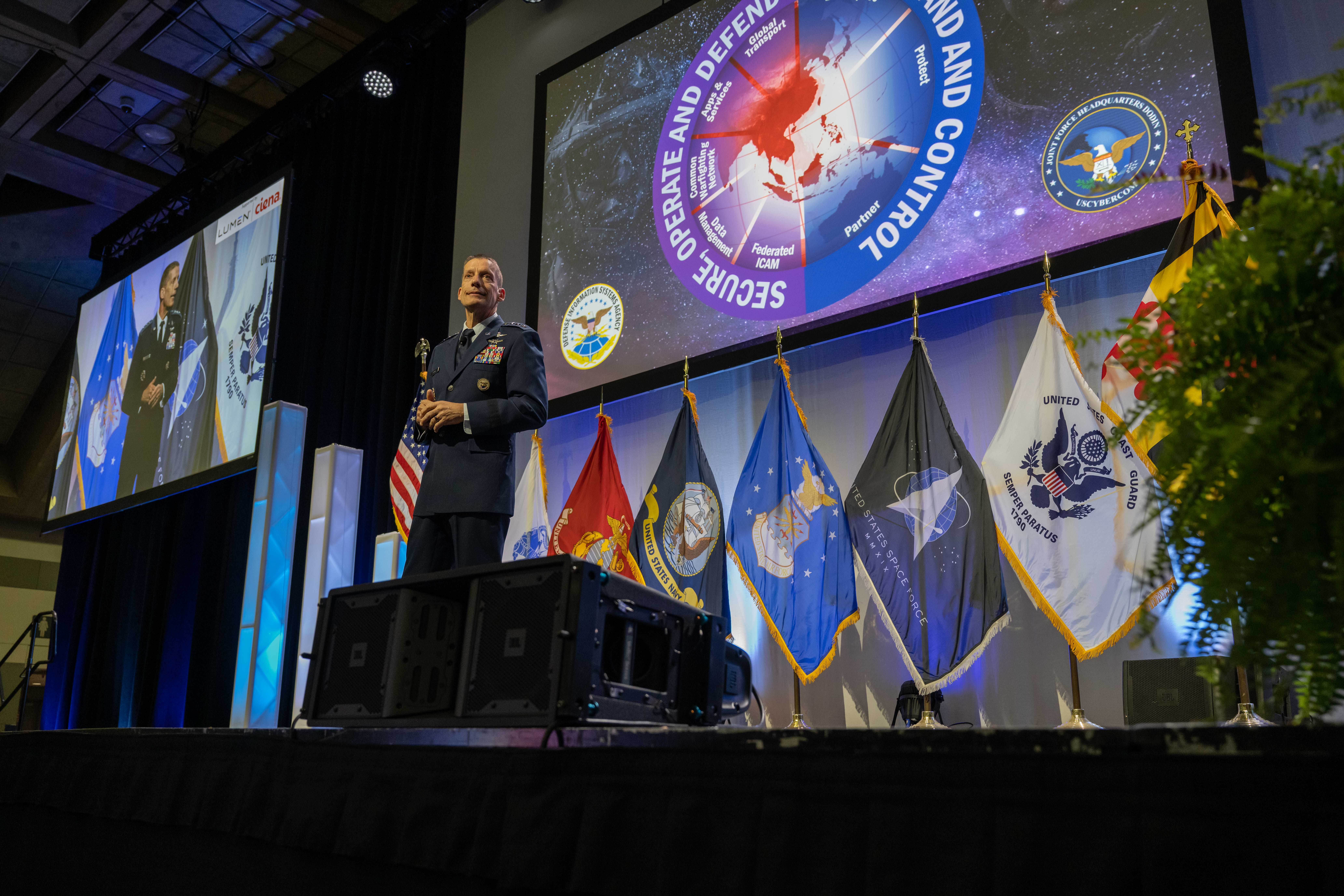TechNet Cyber 2024: Skinner emphasizes strategic alignment, partnerships, adaptability
By the Office of Strategic Communication and Public Affairs
June 27, 2024

The Defense Information Systems Agency’s lead officer emphasized the need for strong partnerships between the United States Department of Defense and private industry to bolster and protect the DOD’s network against America’s top strategic adversary, the People’s Republic of China.
United States Air Force Lt. Gen. Robert J. Skinner, DISA director and Joint Force Headquarters-Department of Defense Information Network commander, discussed DISA’s role as a combat support agency and how the agency is aligned to address global threats.
“[The People’s Republic of China] is listening. They’re studying our doctrine and analyzing our strategies and plans. They are focused on disrupting our critical infrastructure,” Skinner said during his 2024 AFCEA International TechNet Cyber conference keynote June 26, in Baltimore.“This isn’t just DOD; this is across the board. This is a national threat. Not only are they targeting, [they’re] targeting to gain and maintain a positional advantage in the future,” he added.
Skinner outlined the importance of the DISA Next Strategy, which focuses the agency’s plans to enable DOD and warfighter lethality through resilient, survivable and secure capabilities. The DISA Next Strategy names the first of four strategic imperatives as operating and securing the DISA portion of the DODIN, per DOD imperatives. This “encompasses the Defense Information Systems Network, the DISN-DODIN boundary, multi-modal gateways, the transport layer and DISA services including on-premises and cloud data storage, applications, application hosting and more. Operate refers to the 24/7 management of DISA’s terrain; whereas secure refers to DISA’s responsibility to protect DISA’s terrain, data at rest and data in transit.”
Skinner said battle space awareness and technology sharing are key methods to achieve effective analytic superiority. The agency is pushing to unify capabilities that can be leveraged across all the military services and government agencies.
He mentioned DODNET as, “common IT for our agencies,” saying its use is expanding within the department. Skinner said there are 30 sites, with roughly 10,000 personnel leveraging it. “We are ramping up significantly this year and in the next.”
Examples of successful programs include Thunderdome, the zero-trust umbrella and global transport, which provides 2 million miles of infrastructure transport, Skinner said. Another successful tool is the Defense Enterprise Office Solution's recently launched DOD-365.
The purpose of Thunderdome is to create a new architecture based on the tenants of zero trust that is dynamic, adaptable and can be extended from the user to the data edge. Thunderdome improves threat detection by uniformly applying national-level security policies automatically. Thunderdome creates a better user experience through network routing optimization, and by reducing the number of security applications users see their devices work faster and more efficiently.
Regarding AI, Skinner said DISA is taking a measured approach. Again, directly addressing current and potential industry partners, he said, “Leveraging AI to get better battle space awareness; to leverage where our adversaries are within our networks — those are things we need to focus on. That is where we need your help.”
Watch Skinner's full keynote via DISA YouTube.